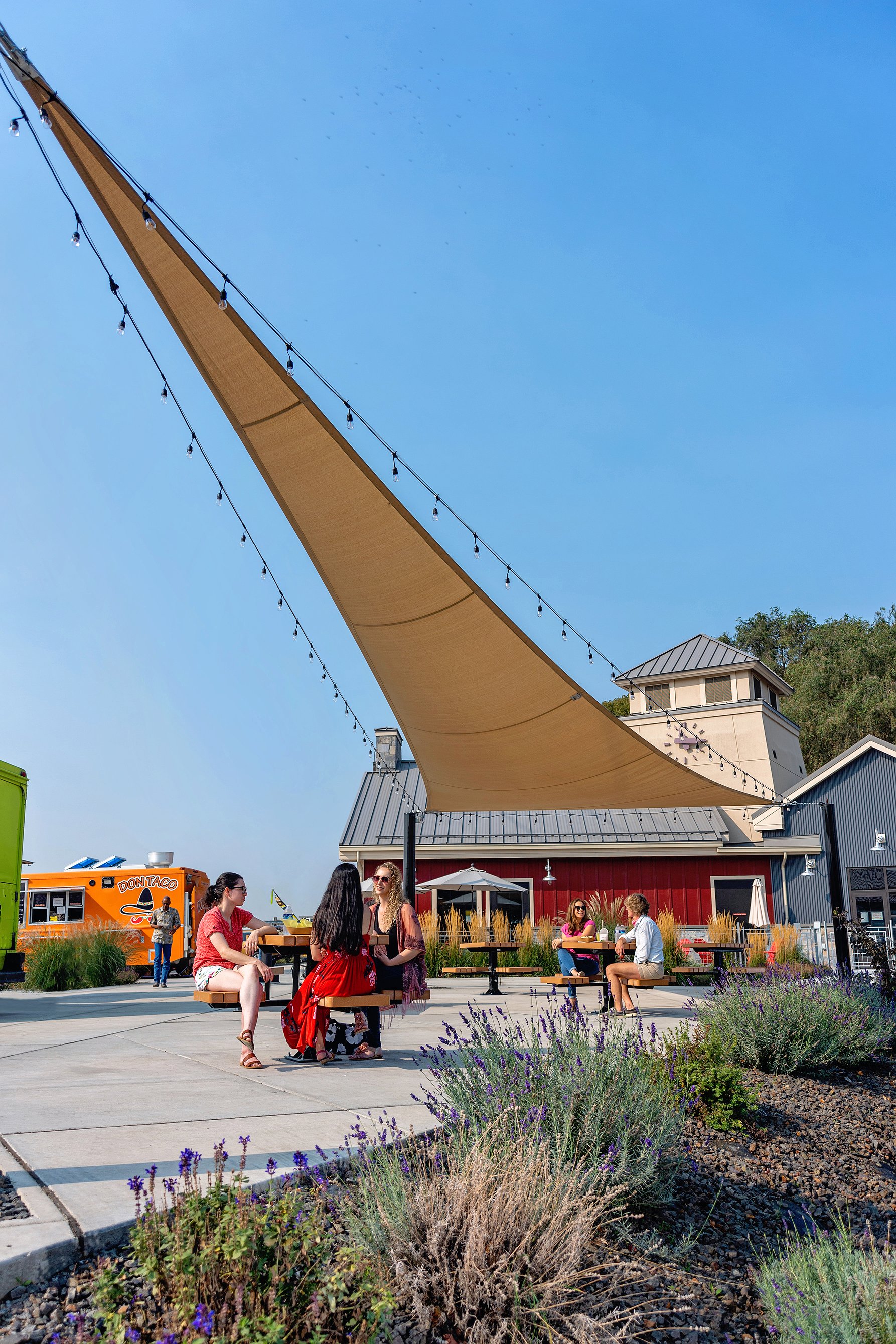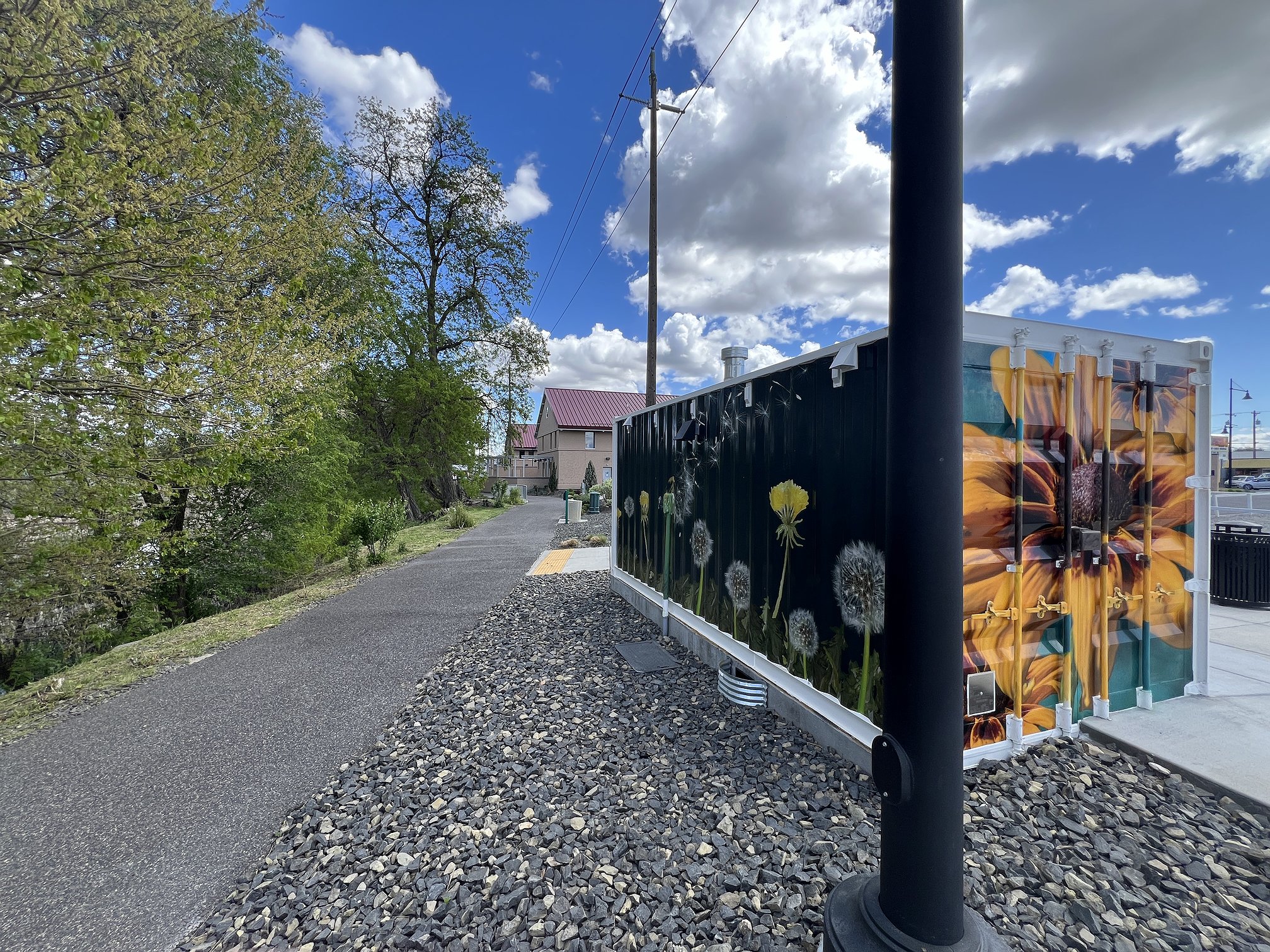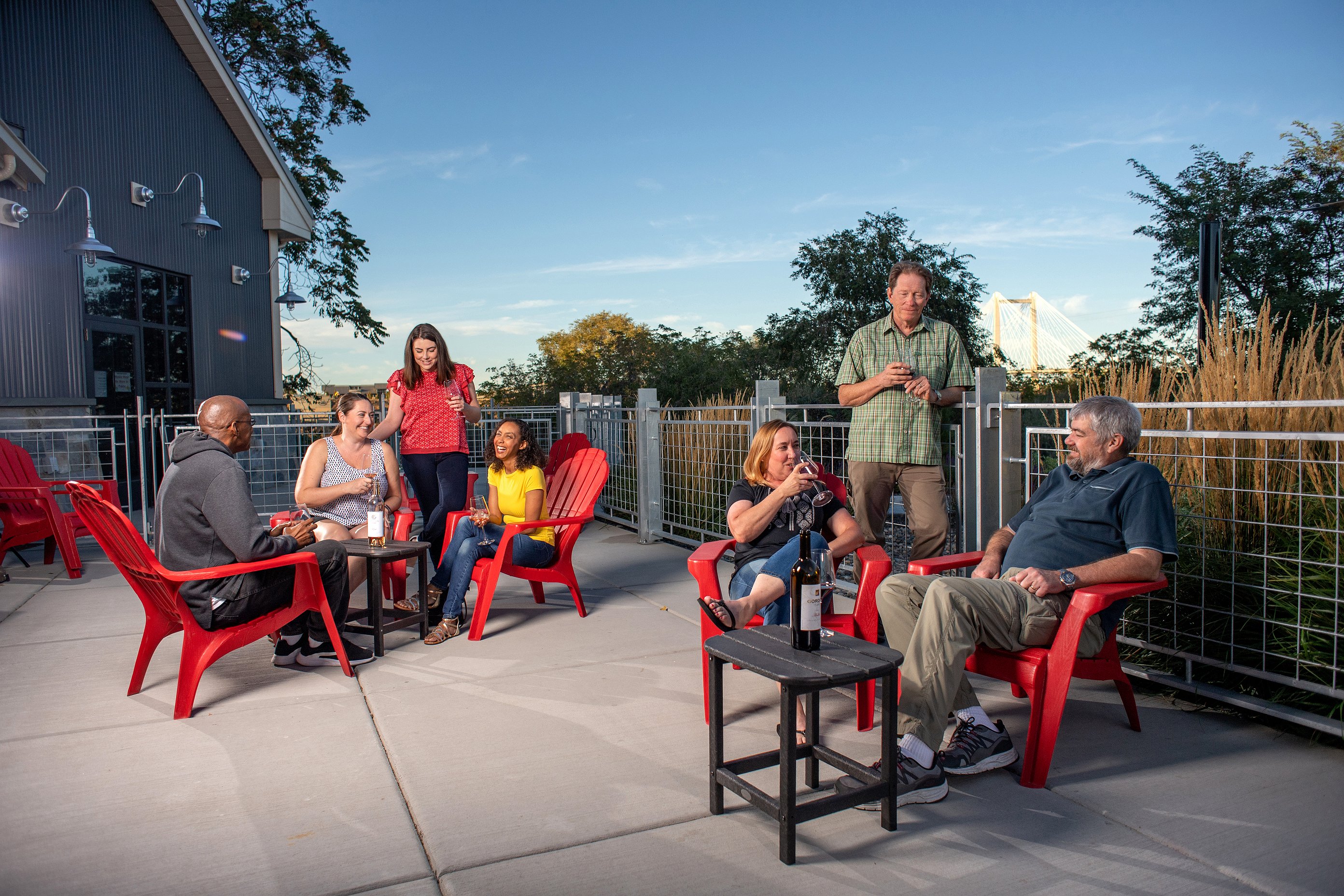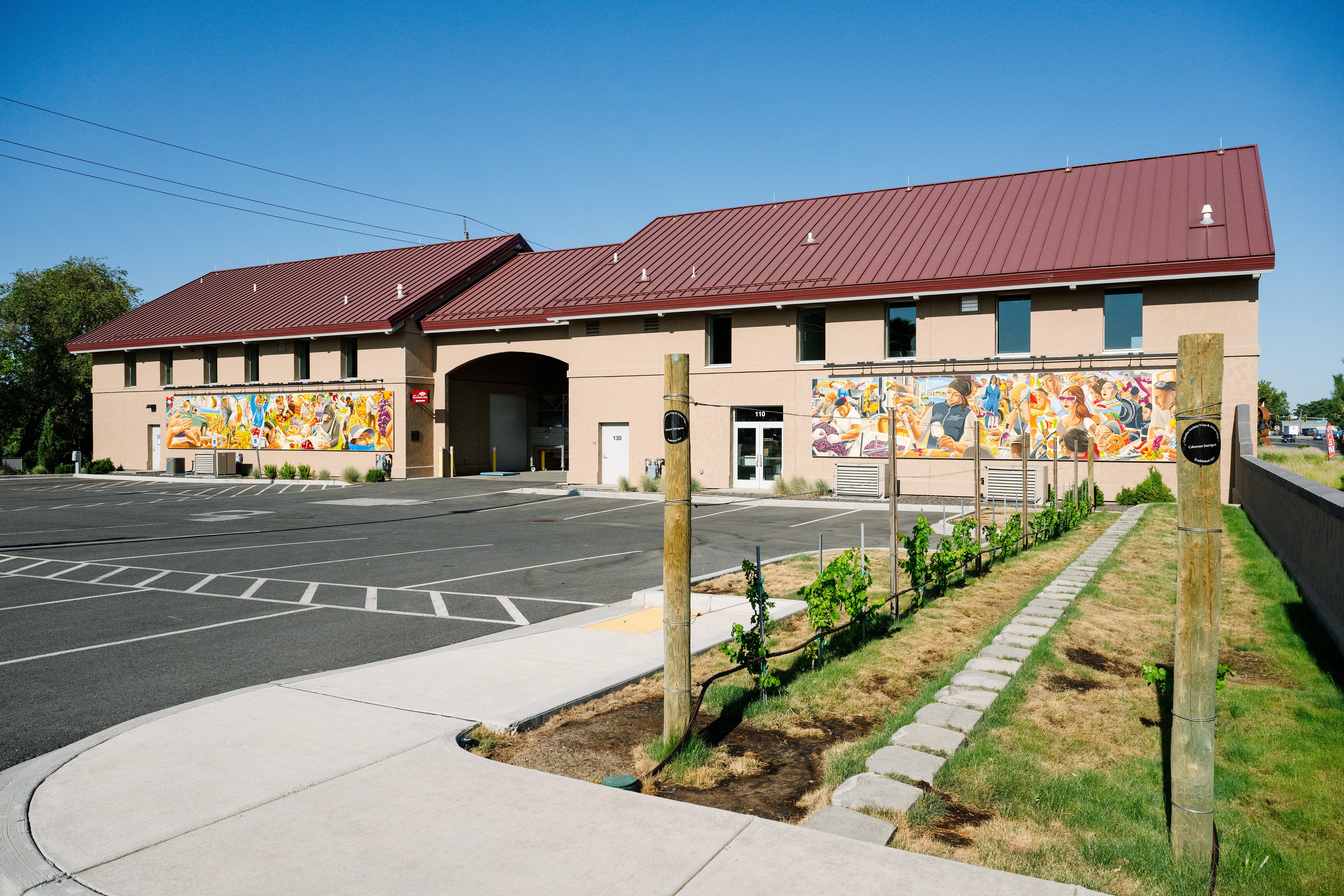Columbia Gardens: Port of Kennewick turns industrial zone into wine and food destination
KENNEWICK — On a given day you can see folks on the Kennewick waterfront sipping wine, noshing on tacos or barbecue or just soaking up the sunshine and the view at Columbia Gardens, and they can thank the Port of Kennewick for that.
“Our community is growing, and people are saying, ‘Why can’t I have better access to waterfront? There’s other communities that redeveloped their waterfront. We want more,’” said Port of Kennewick Deputy CEO Tana Bader Inglima.
Columbia Gardens is located on Clover Island, a little spit of land on the Columbia River in the middle of Kennewick just across the railroad tracks from the city’s historic downtown. It’s home to a lighthouse and a yacht club, wine tasting rooms, food trucks and a barbecue restaurant.
Port districts in Washington are generally associated with more industrial and transportation-related work – operating airports and rail lines and attracting manufacturers – than with creating attractive retail space or community gathering places. But Port CEO Tim Arntzen said it’s not as off-the-wall as it seems at first glance.
“Port districts have a lot of legislative authority, and we can do lot of different things, but it doesn’t mean that you want to or it’s a smart thing, so you’ve got to be careful getting into new things,” Arntzen said.
The progression started when the Port of Kennewick was looking into ways to support Washington’s wine industry, Arntzen explained. The Port sent a delegation to California’s Napa Valley to see what could be emulated up here.
“We were blown away with how advanced California is,” Arntzen said. “It’s not only the industry end of wine, but it’s the tourism end as well. If you go down the Napa Valley on a weekend, it’s crazy busy. What we saw down there was, you had to drive from your motel room out into the Napa Valley, and you’d have to drive to all these locations. And we got thinking, what would happen if we brought the wine industry (into) town, in Kennewick, where it’s closer?”
The Port of Kennewick was formed in 1915 to capitalize on the opening of the Celilo Canal near The Dalles, which turned Kennewick into a bona fide seaport, according to the Port’s history. Like so many urban waterfronts, the space along the river was filled up with industry, including Clover Island, which the Port has owned since the mid-1950s, Bader Inglima said.
“Over the years, there were a lot of tired buildings,” she said. “We had paint shops and auto body shops and tire shops and things along the waterfront. Clover Island had a restaurant out there and there was a marina, but there wasn’t a lot of other activity.”
In 2003, Bader Inglima said, there was a move to revitalize the waterfront as well as the historic downtown district. The Port renovated the road leading to Clover Island in 2006, put in all new utilities and built a new office building for itself. It bought the marina and put in marine infrastructure as well and bought land on the mainland along Clover Island Drive and the interior waterfront.
“We worked with a number of the businesses,” Bader Inglima said. “There was a wrought iron welding company, there was a tire shop, there was a vending machine supplier, a variety of other businesses there that we helped relocate to property that the port had … so that we weren’t just kicking them to the curb when we acquired their business.”
Arntzen’s policy was to spend Port money on people rather than lawyers, she added, so the people at a trailer park that the Port bought weren’t just kicked out either. The process took about six years, she said.
“We helped work with the folks who had the trailers and purchased some of them outright, because many of them were so old, they weren’t up to code, they couldn’t be moved elsewhere,” she said. “Over the course of about six years, we worked with those who were able to move their trailer, waited and worked with them till they were able to relocate.”
Today, Columbia Gardens has tasting rooms for six wineries and five food trucks with room for more, Arntzen said. One food truck, Swampy’s BBQ owner Ron Swanby, bought property on Clover Island from the Port and moved out of his mobile kitchen into a brick-and-mortar restaurant.
Artwork by local artists decorate the grounds, Bader Inglima said.
“Art is a kind of a foundational element for economic development,” she said. “If you’re a visitor and you see interesting and well-tended, maintained public art, it creates a kind of a sense of place.”
The port has four or five more lots for sale that would be well suited to a winery or restaurant or tasting room, Arntzen said. He’d also like to see a sit-down building to go with the food trucks, to accommodate diners during the chilly winter months, he said. The investment has been worth it because taxpayers have been able to see what they’ve got for their money, especially given the limited resources and the desire for economic development that contributes to quality of life.
“There’s always more we can do,” Arntzen said. “But, you know, our problem, if it’s a problem, is that we’re a small government entity, and our budget is very, very limited … You’ve got to make it justifiable to the taxpayers, and as we know, taxpayers don’t want to pay any more than they have to.”
Visitors have noticed Kennewick’s recreation options as well.
“We wanted to create something that would draw visitors in,” Bader Inglima said. “Because if you start getting the visitors in and they’re spending money, that will attract other businesses.”










